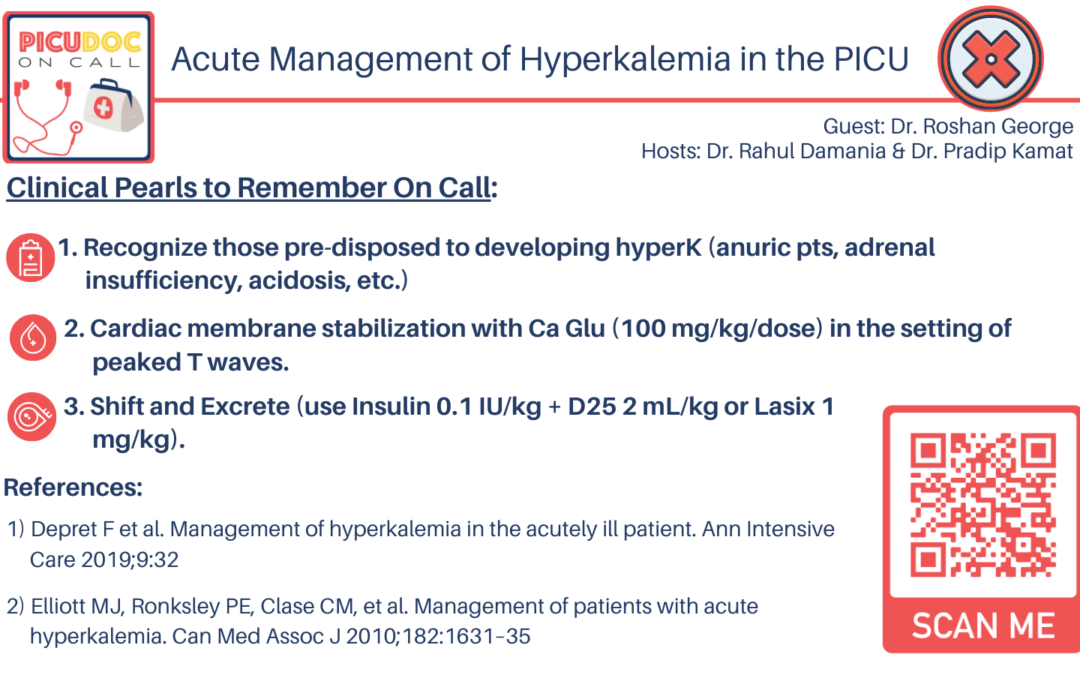Today’s episode is dedicated to acute management of hyperkalemia in the PICU. Join us as we discuss the patient case, symptoms, and treatment.
We are delighted to be joined by Dr. Roshan George, Associate Professor of Pediatrics, a practicing Pediatric Nephrologist at Children’s Healthcare of Atlanta, and the Program Director of Pediatric Nephrology Fellowship at Emory University School of Medicine.
Show Highlights:
- Our case, symptoms, and diagnosis: A two-year-old male with a history of focal segmental glomerulosclerosis controlled on chronic prednisone therapy presents to the PICU for respiratory failure. The patient is noted to be hypotensive and tachycardic. Potassium is elevated at 6.4 with no hemolysis noted. The EKG is notable for peak T waves, and the patient is also noted to be anuric.
- Definition of hyperkalemia: a potassium serum level higher than 5.5 (Be sure to correlate your lab sample with clinical and telemetry changes to rule out pseudohyperkalemia)
- Common causes of hyperkalemia:
- Increased intake of potassium
- Transcellular shift
- Decreased renal excretion
- Inborn error of metabolism, especially adrenal problems
- Why it’s important to be vigilant about hyperkalemia in patients with chronic kidney disease, end-stage renal disease, acute kidney injury, and those with a transplanted kidney
- Clinical manifestations of hyperkalemia:
- The risk is for cardiac conduction abnormalities and muscle weakness/paralysis.
- Adverse events can occur with levels > 5.5mEq/L, and the risk increases as levels rise.
- Any serum K level > 6mEq/L is significant, regardless of EKG changes.
- Two hallmarks that can drive effective management of hyperkalemia are EKG findings and laboratory confirmation of elevated serum potassium.
- Other important labs for patients with hyperkalemia include a basic electrolyte panel to assess kidney function, CBC, and serum blood gas to assess acid/base balance. (A medication check for K supplements or ACE inhibitors should also be done.)
- Steps in the management of hyperkalemia:
- First, caution should be exercised that any K level > 5.5 is a medical emergency and should be addressed immediately without finding the etiology.
- Stabilize the cardiac membrane.
- Shift potassium with insulin and glucose, bicarbonate, and B2 adrenergic agents.
- The long-term goal should be to improve excretion with Kayexalate or Furosemide (Remember the mnemonic: “Loops lose K.”)
- General considerations about dialysis are:
- CVVH vs. HD
- Severe hyperkalemia is a key indication for RRT in acutely ill patients.
- Hemodialysis can be used in an emergency.
- Takeaway clinical pearls regarding hyperkalemia:
- Make sure the potassium level is accurate.
- Consider the next steps in potassium removal.
- Remember that etiology is the last step.

